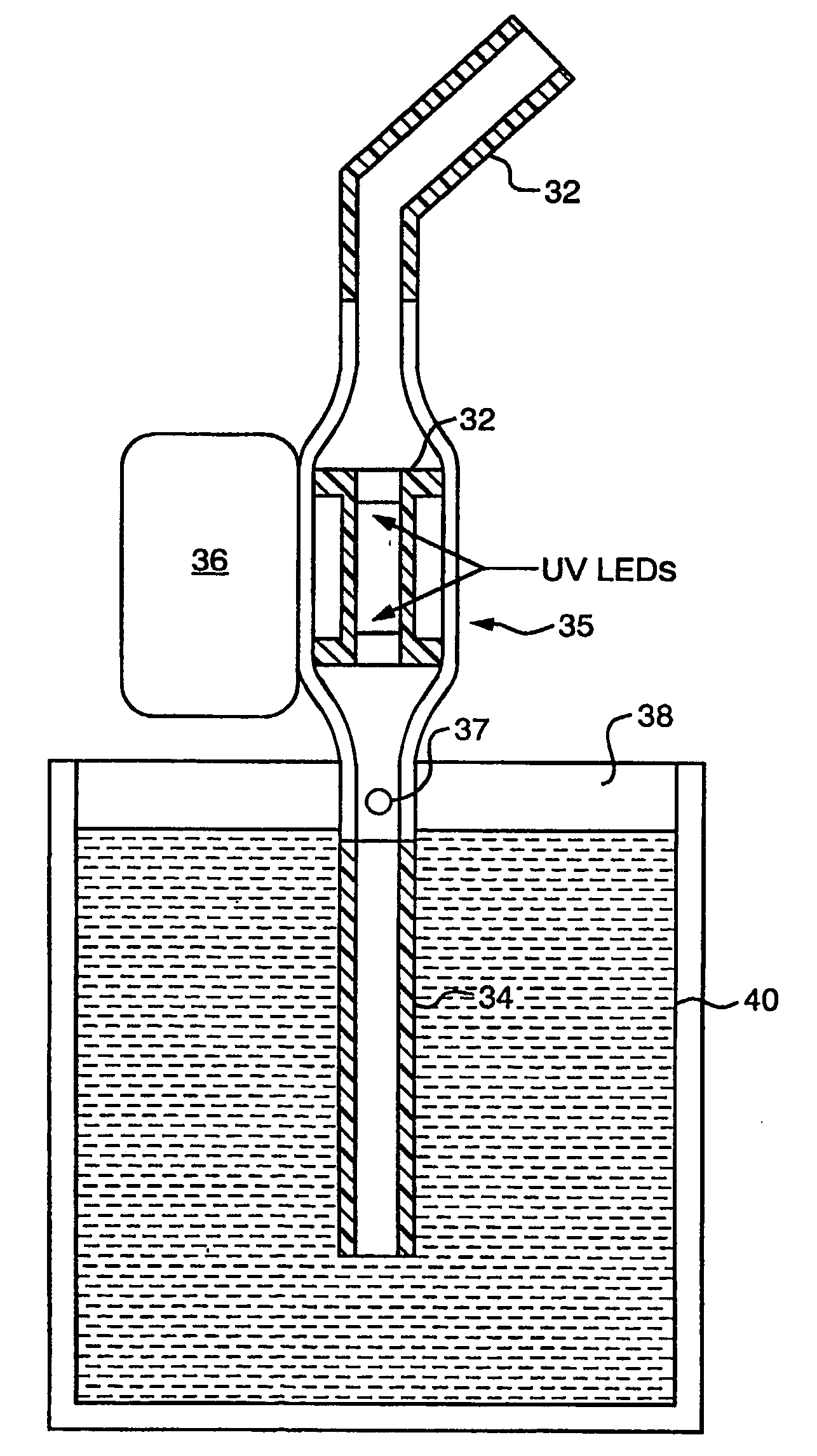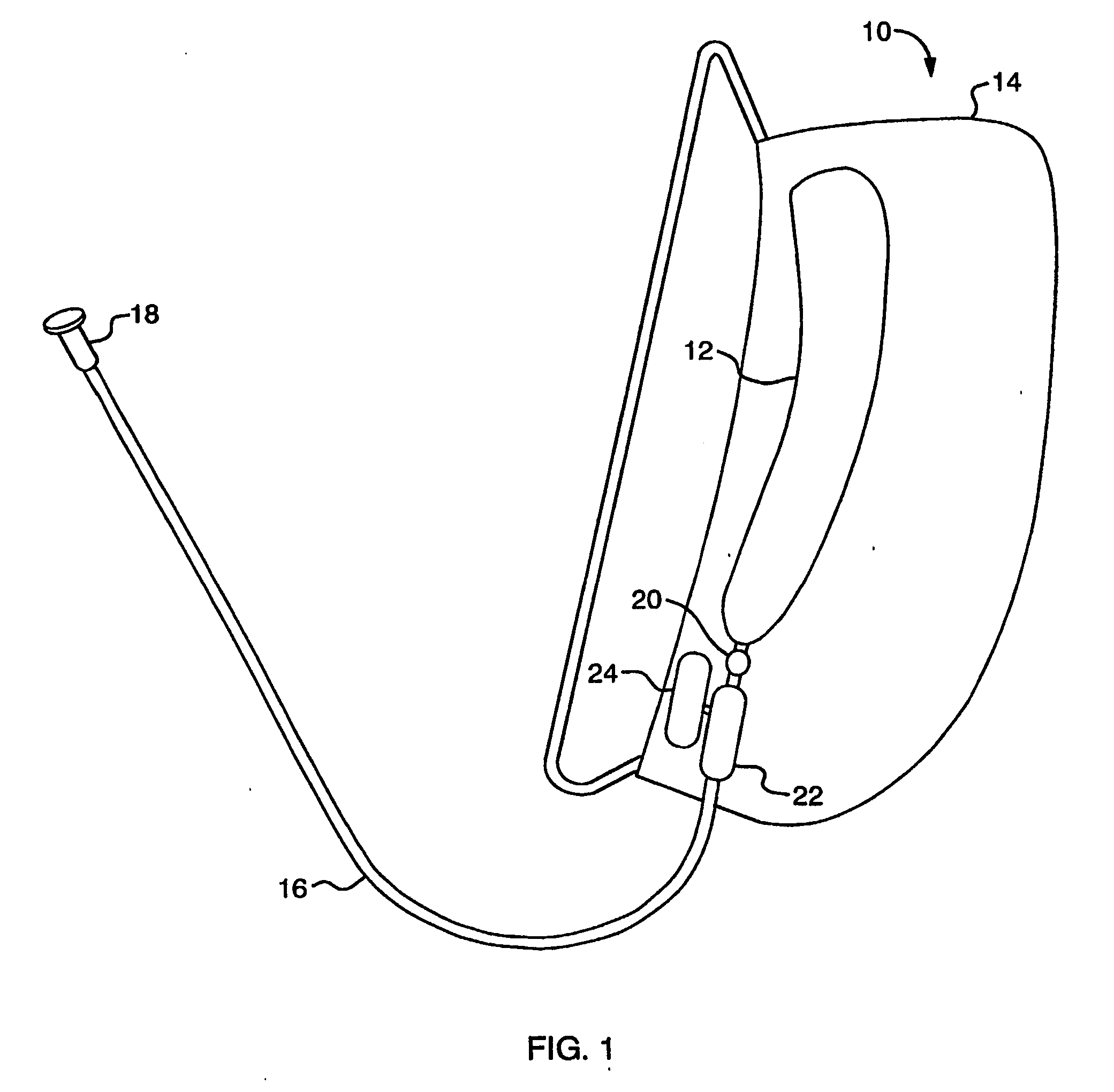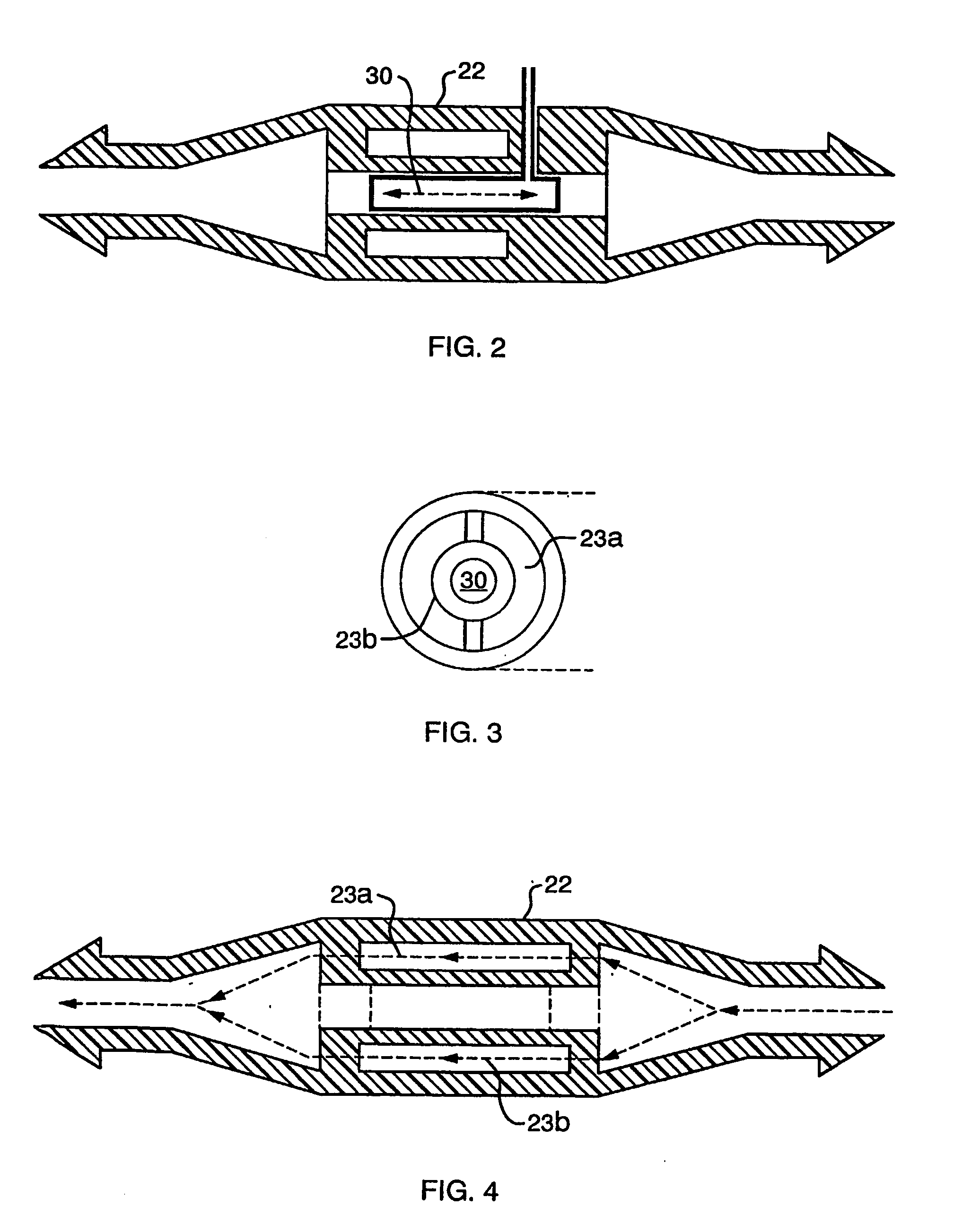Uv led based water purification module for intermittantly operable flow-through hydration systems
a technology of intermittant operation and water purification module, which is applied in the direction of machine/engine, process and machine control, and material analysis using wave/particle radiation. it can solve the problems of complex circuitry, high cost and fragile ccfl uv lamp assemblies, and inability to adapt well to wearable hydration systems. it can eliminate batteries and the like
- Summary
- Abstract
- Description
- Claims
- Application Information
AI Technical Summary
Benefits of technology
Problems solved by technology
Method used
Image
Examples
Embodiment Construction
[0018] As shown in FIG. 1, a wearable flow-through hydration system 10 includes a bladder 12 that is contained in a backpack 14. The bladder supplies hydrating fluids, such as water, to a user through a tube 16 and mouthpiece 18. The tube includes a purification module 22 that ensures that the water is sufficiently irradiated by ultraviolet (“UV”) light in the germicidal range. As the water flows through the module 22, the UV radiation destroys the DNA of the microbes present in the water, thereby preventing microbial reproduction, and therefore, infection. The purification module 22 is discussed in more detail below with reference to FIGS. 2-4
[0019] When a user requires water from the bladder 12, the water is drawn out of the bladder and flows past a water flow sensor 20. When the water flow sensor senses the flow, the sensor switches on the purification module 22. A power supply 24 supplies between 6 and 9 volts DC power to the purification module, and as discussed in more detail ...
PUM
| Property | Measurement | Unit |
|---|---|---|
| Surface energy | aaaaa | aaaaa |
| Power | aaaaa | aaaaa |
| Flow rate | aaaaa | aaaaa |
Abstract
Description
Claims
Application Information
 Login to View More
Login to View More - R&D
- Intellectual Property
- Life Sciences
- Materials
- Tech Scout
- Unparalleled Data Quality
- Higher Quality Content
- 60% Fewer Hallucinations
Browse by: Latest US Patents, China's latest patents, Technical Efficacy Thesaurus, Application Domain, Technology Topic, Popular Technical Reports.
© 2025 PatSnap. All rights reserved.Legal|Privacy policy|Modern Slavery Act Transparency Statement|Sitemap|About US| Contact US: help@patsnap.com



